48 Hours in Sarajevo
Sarajevo
October 1st-October 3rd, 2019
Sarajevo has an undeniably dark history. Even prior to its siege that lasted for four years, it was primarily known as the place where Archduke Franz Ferdinand and his wife were assassinated, igniting the “War to End All Wars.” While it did not, in fact, end all wars, it did end people calling any war the “War to End All Wars.”
Bosnia’s history and political situation is extremely complex, but there’s something small that illustrates it well. This is a pack of cigarettes.
Believe it or not, it’s a warning label written in the three official languages of Bosnia and Herzogvina: Serbian, Croatian, and Bosnian. The only thing i can 100% say for sure is that the first warning is in Serbian, as Serbian uses a Cyrillic alphabet. The other two are either Bosnian and Croatian or Croatian and Bosnian. I was told the order of the languages changes all the time too as not to favor any one of the official languages. Also, in case you’re wondering, this pack of cigs cost $3.
I saw much of Sarajevo on a tour of the city, where a guy from our hostel very passionately articulated his perspective of the war. He was 27 years old, and told us some of his memories of Sarajevo under siege.
Sarajevo was under siege for over four years, between April 5th, 1992 and February 2nd, 1996. On day 1, 13,000 troops of the Bosnian Serb Army surrounded the city, shelling it with mortars they received when the powerful Yugoslav army disbanded. During Yugoslavia’s heyday, it had one of the strongest armies in the world. Sarajevo was hit by an estimated 65,000 shells during the siege.
Sarajevo hosted the 1984 Winter Olympics, back when It was part of Yugoslavia. Many of the buildings constructed for the games still exist, including an abandoned bobsled track. It’s crazy to think that 10 years after hosting the Olympics, this city was a an active war zone under siege.
Sniper’s Nest
The Sniper nest is a nickname given to what was formerly a 5-star hotel in Sarajevo. The views that once made the hotel’s location desirable perched on a hill overlooking Sarajevo was valuable for Serb snipers. From this hill we could actually see the street our hostel sits on, the so-called “Sniper Alley.” It was unnerving to say the least.
The Tunnel of Hope
It’s no exaggeration to say that the Tunnel of Hope saved the city of Sarajevo during the siege. With the inhabitants of Sarajevo sealed off from the rest of the world by Serbian forces, it was their only way to get supplies from the outside. It’s an incredible story of human ingenuity and resourcefulness. The tunnel took months of round-the-clock work from hundreds of people to build. It’s remarkable that Serbian forces were never able to find and destroy the tunnel. There’s not much left of the tunnel these days and crouching through the surviving segment was difficult for my 6’3” frame. When I later experienced severe back spasms, it may have partially been because of this tunnel. It was more likely some of my acrobatics at the bobsled track.
The tunnel took 4 months of 24-hour a day digging from both sides to be constructed. The tunnel was 800m long and would take two hours to pass through due to its short height and sheer volume of people trying to pass. It’s estimated that 20 million tons of food passed through and 1 million people during its 3 years in operation.
Prices of goods in Sarajevo were astronomical, for obvious reasons - they were surrounded by troops and their access to the outside world was cut off for four years. The tunnel linked Sarajevo with Bosnian-controlled territory.
The UN placed an arms embargo on Bosnia & Herzegovina during the Bosnian War. Makes sense, right? You wouldn’t want to be contributing to the atrocities in the region through the sale of weapons. It’s a bit more complicated than that. Since the Serbians had ample weaponry from the dissolved Yugoslav Army, this only magnified the imbalance between the two sides and therefore disproportionately affected the Bosniaks. Bosniaks believe their right to self-defense under Article 51 of the UN Charter was violated by this embargo. In addition to fuel and other supplies, the Sarajevo Tunnel was instrumental for the smuggling of weapons.
Gallery 11/07/95
Image courtesy of 11/07/95 gallery
This was a sobering experience, to say the least. The 11/07/95 gallery is a fantastic photo and video-based museum that chronicles the Srebrenica Massacre. Its name, as you might have guessed, is a date. Nearly 8,000 Bosniaks were murdered in the span of eleven days. It made me think about what people are capable of and what atrocities we might like to not think about going on today. It’s good to have those experiences every so often to shake yourself out of complacency. One of the curious things the gallery sells is postcards. The images on the postcards are truly shocking, and I can’t imagine sending one to my friends and family.
“A Sarajevo Rose”
There are reminders of the siege all over Sarajevo in the form of a “sarajevo rose.” These are memorials created from mortar damage to concrete. They were filled in with red resin, and it both looks like a rose and a crime scene. There are about 200 around the city, which is nothing compared to the total number of mortar blasts in the city.
I went to a professional soccer game with a bunch of people from our hostel. Our team won, 7-1. I’m not a big fan of sports, but it was fun to experience something so local.
I hope some day to get back to Bosnia and Herzegovina to enjoy more of it outside of the darkness. It’s still recovering from the trauma of a war that happened within my lifetime.
In conclusion:

















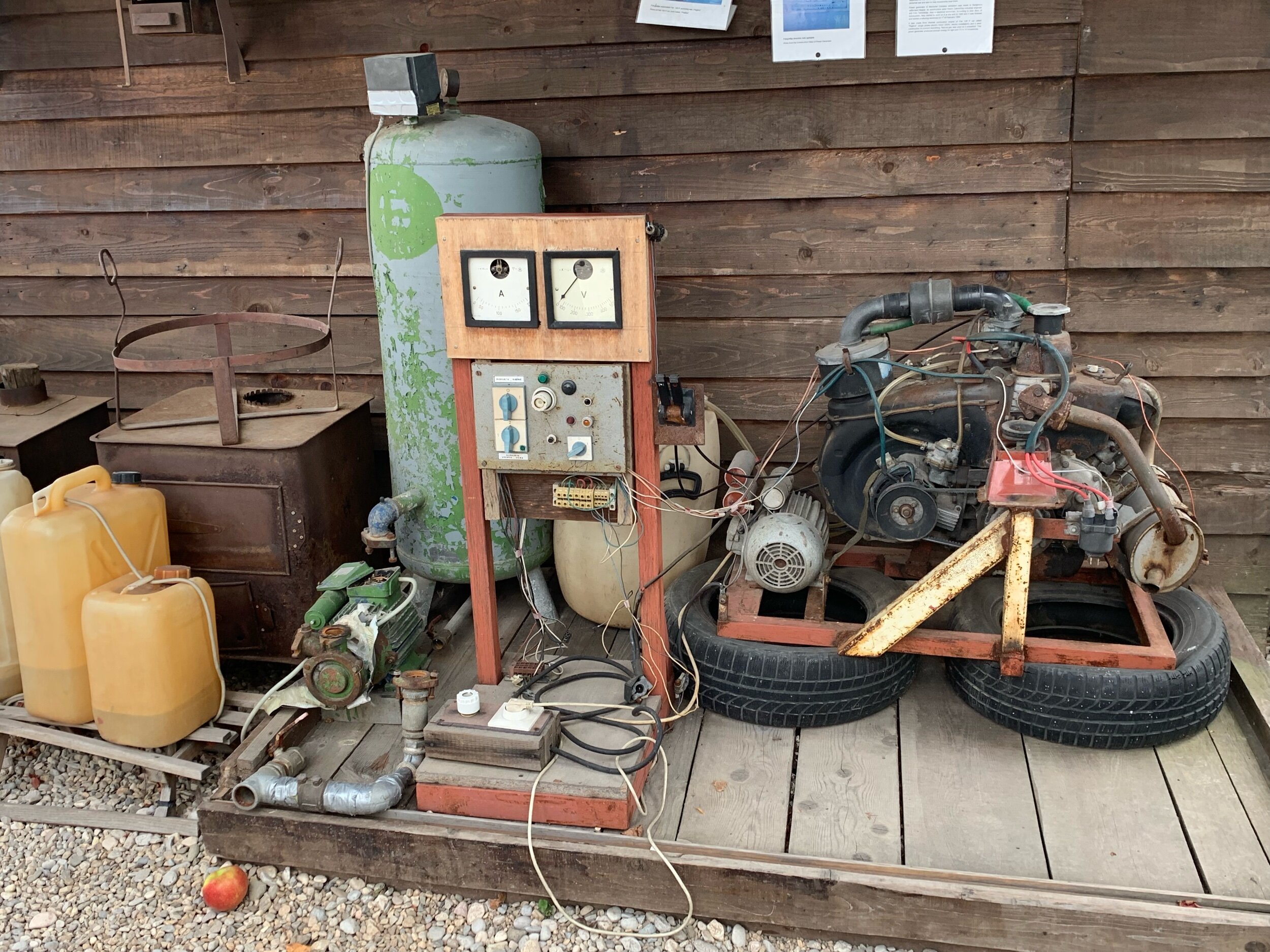


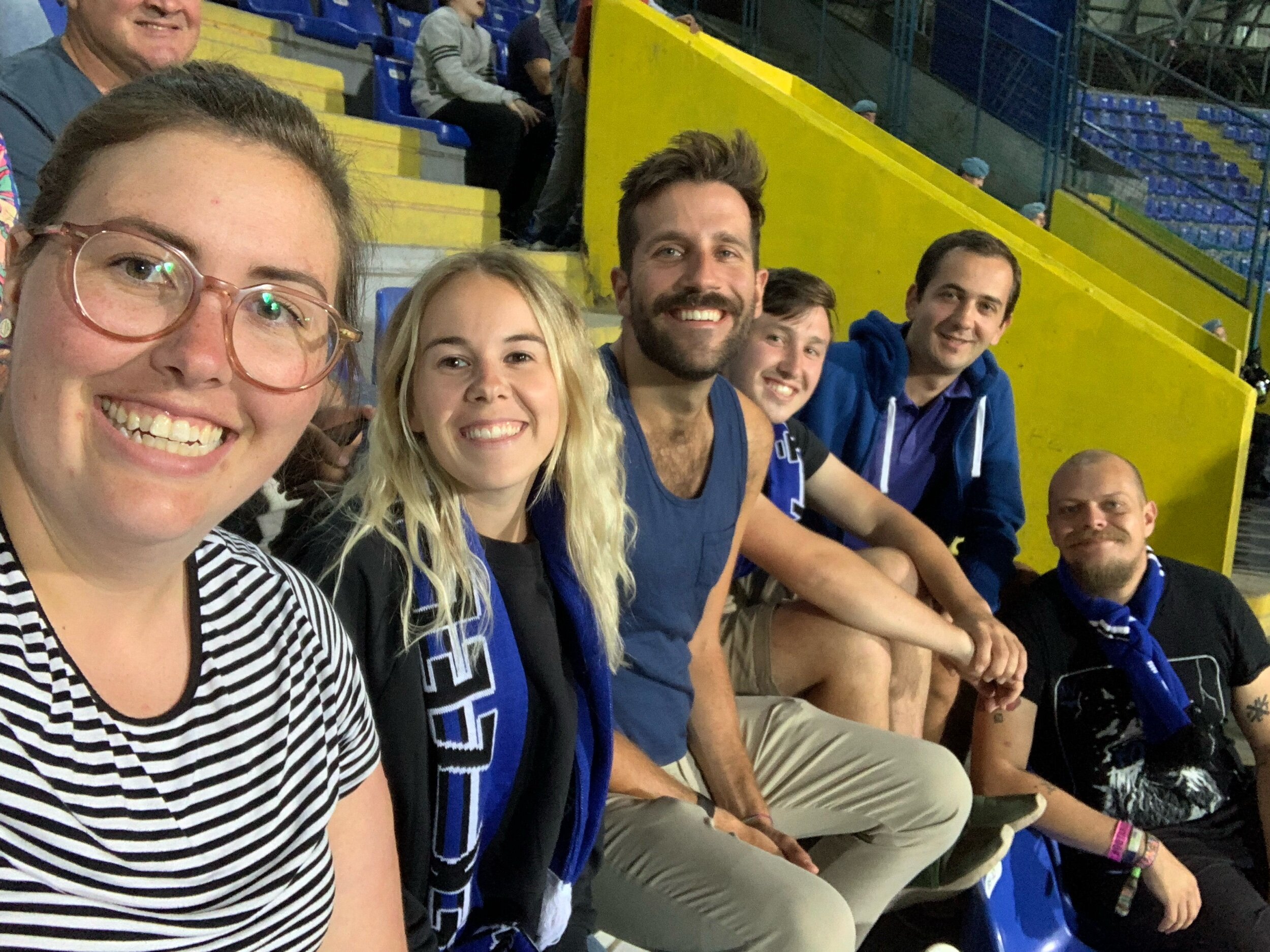
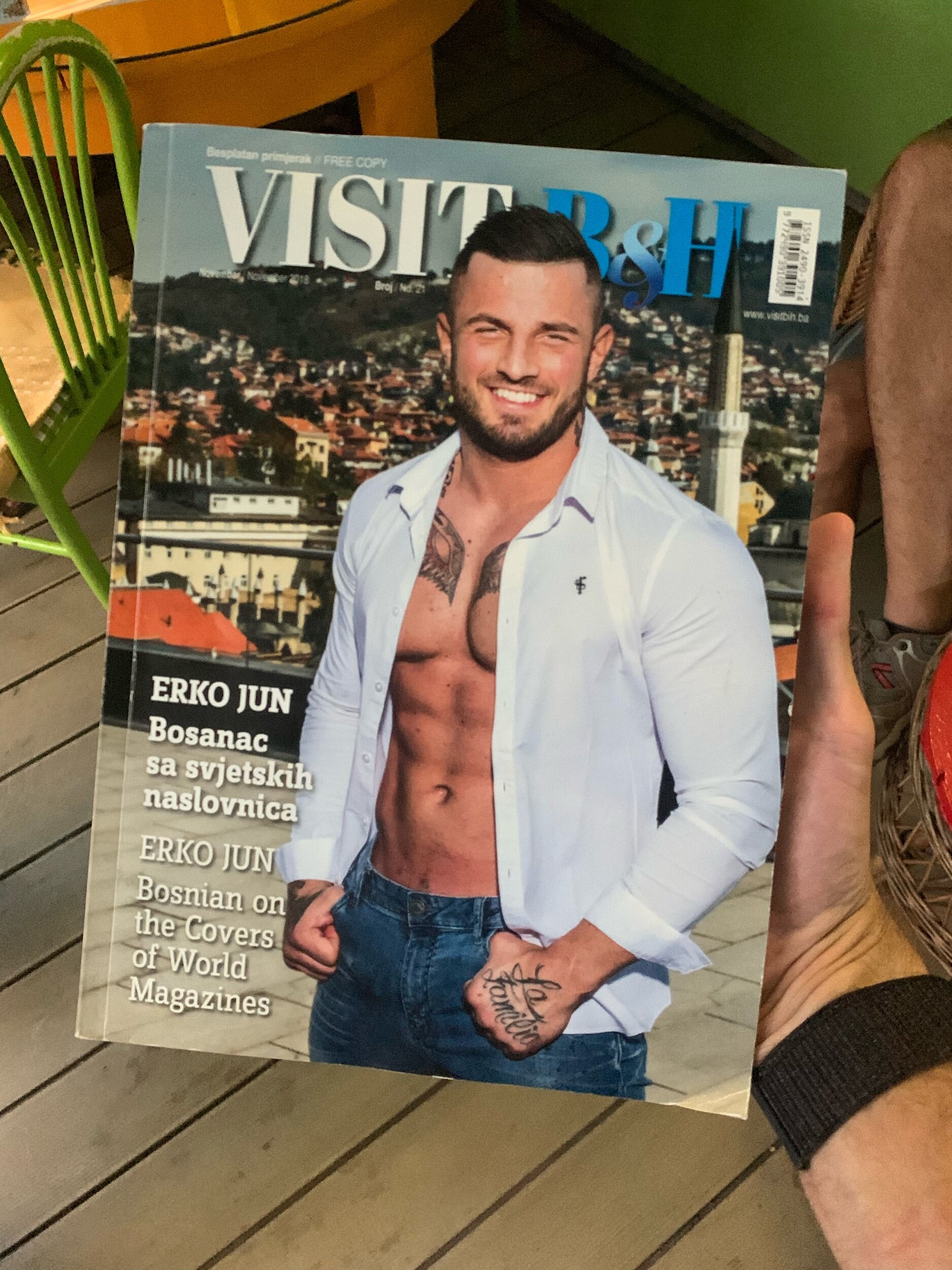
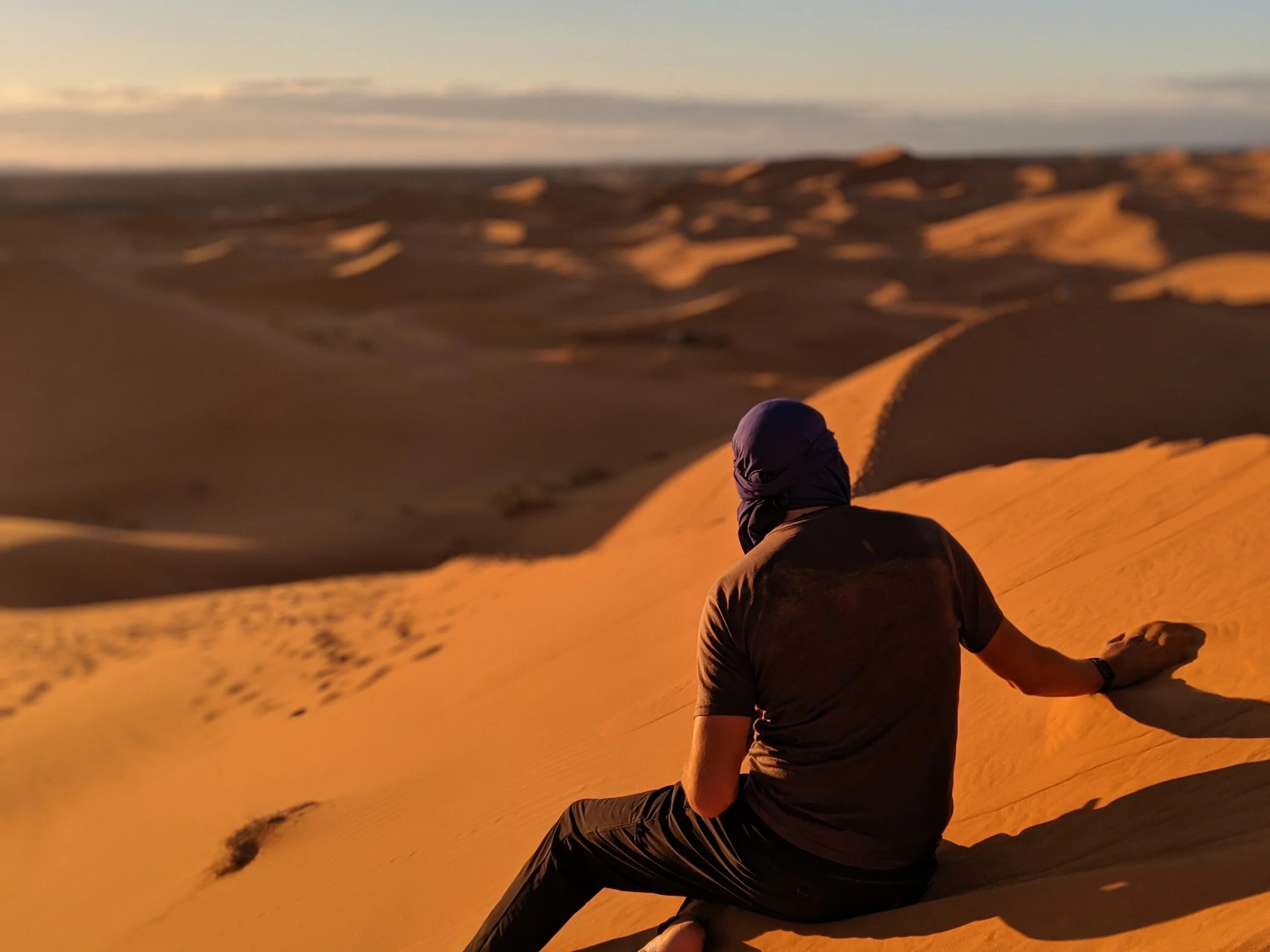



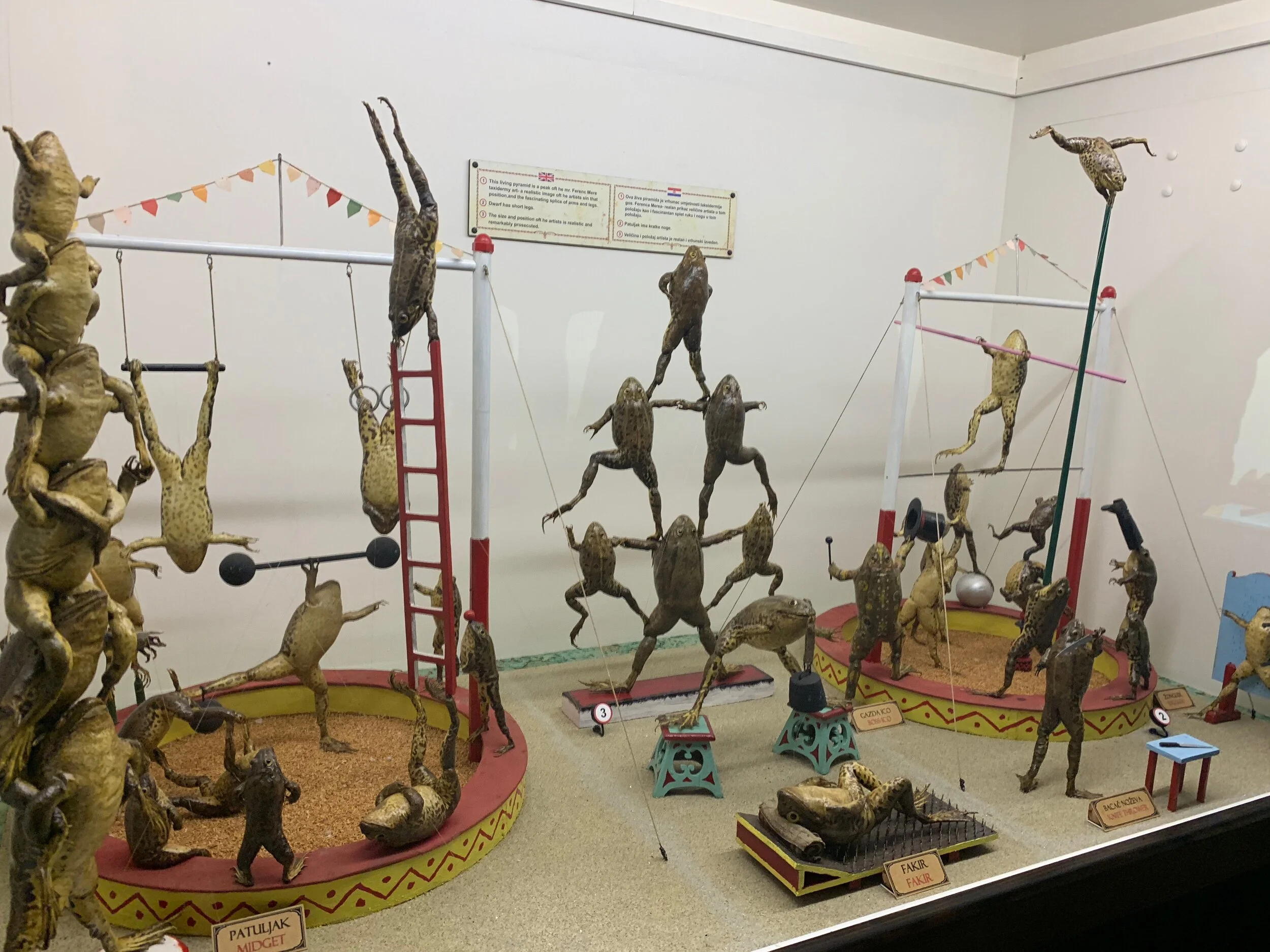
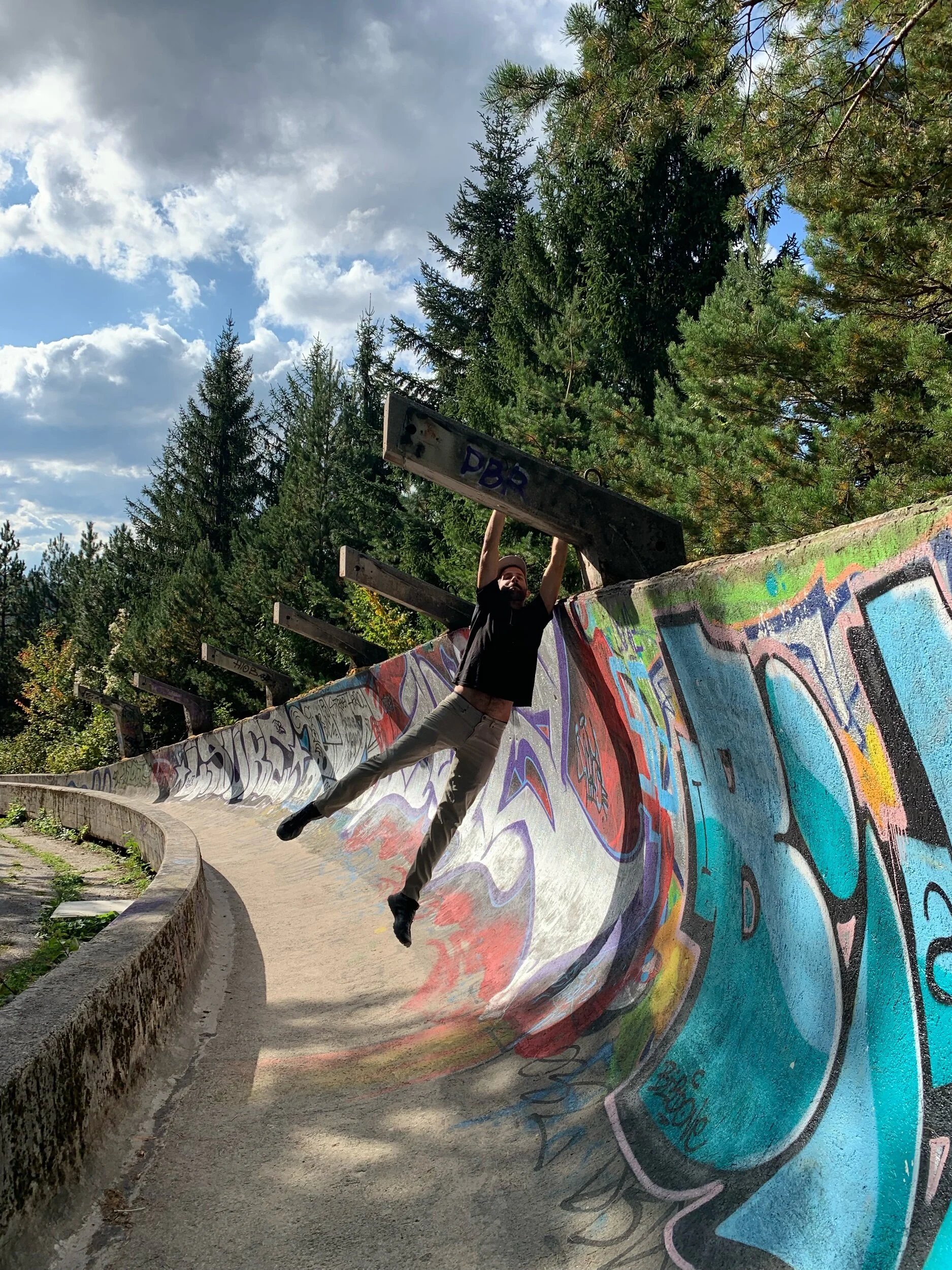
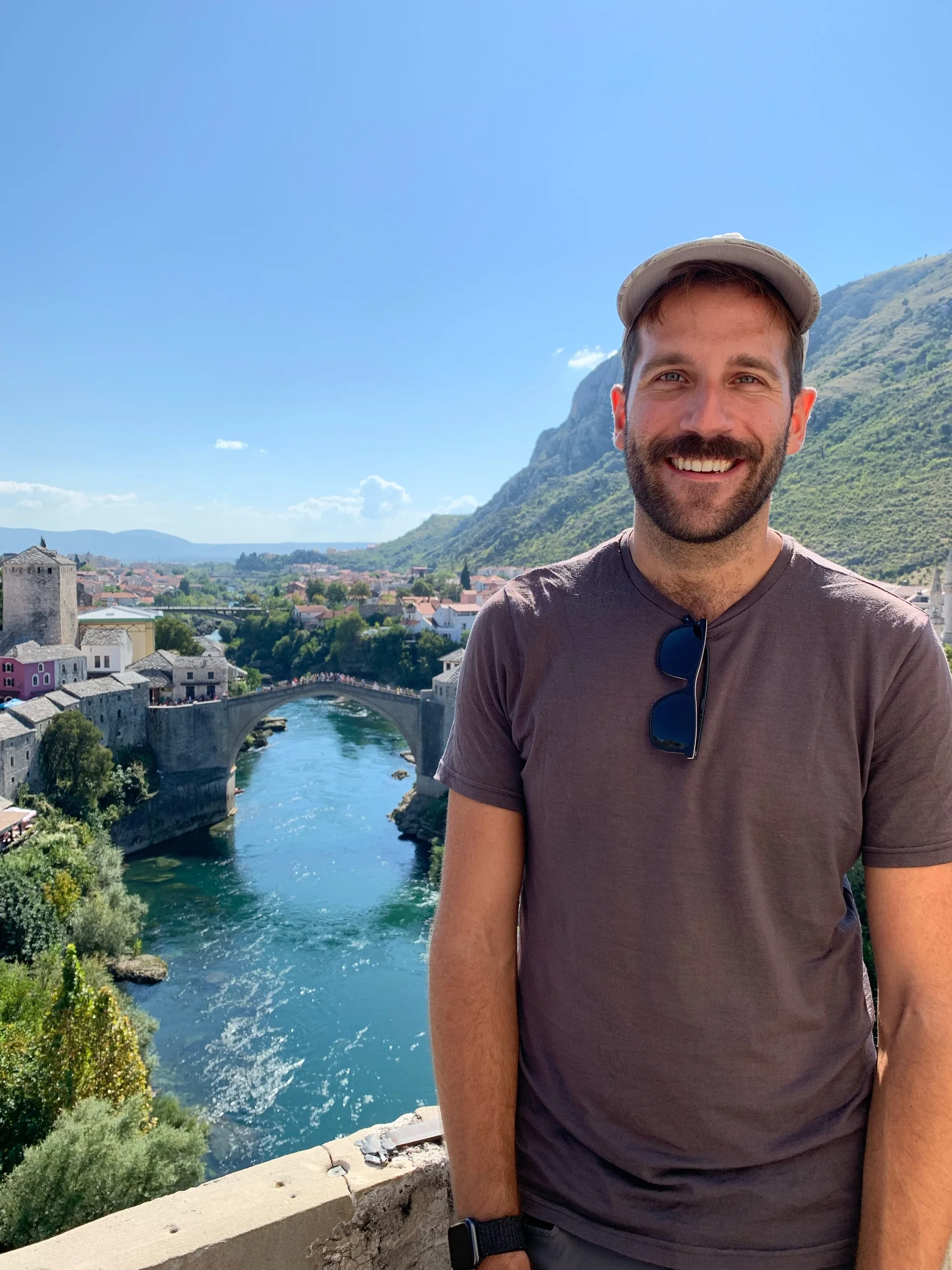


A must for history junkies